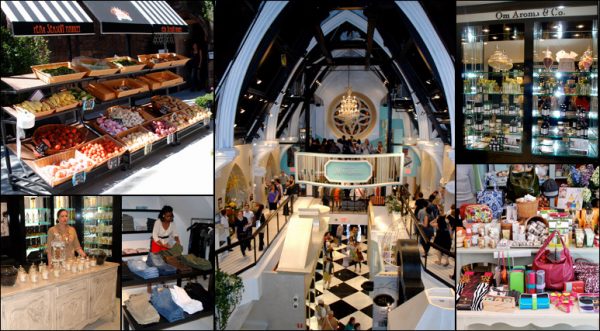Time flies and with it, it brings a lot of changes. Everything from an individual’s personality and lifestyle to the surroundings and environment is bound to undergo transformation unlike that experienced or witnessed before. It often feels great to reconnect with your past but have you ever wondered what it would be like to be a part of the past that you never lived through? No doubt, it will be an unforgettable experience especially for those who love to delve on history.
Many places with historical and architectural importance have been restored for the world to see, but there are only a few for the people to live in. Yes, they have been changed into hotels, bars or libraries etc, to accommodate humans in a better way, yet they do not cease to fill the air with a sense of grandeur that can be felt only in such rare places.
Some architects and designers have had the privilege of working on the churches that have lasted for decades now. They have successfully managed to attain a perfect balance by keeping the history alive with a touch of modernity through innovative solutions. It would not be false to say that it is work of geniuses. The metamorphosis of these old churches into state-of-the-art is incredible.
01. Stanbrook Abbey
The building stands near the Malvern Hills in the city of Worcestershire. The foundations of this abbey were laid in 1625 by Cresacre More, although it was not until 1871 that the building reached its completion. Initially, it was a home for the Benedictine nuns who escaped from oppression at the hands of the enemies during French Revolution. They exercised their religion here for more than a century, leaving the abbey in 2009 to settle in a new home based in North Yorkshire.
Stretching over 21 acres of land, the abbey is extremely spacious with the vast grounds and luxurious chambers. It is obvious from it looks that a lot of work has been put into the design and construction of the building. It has a small, private retreat house attached to it known as St. Mary’s. Also, England’s first private printing press was established here which functions up to this day. Apart from it Gothic outlooks, the interior of the Abbey is exquisitely furnished.
It is now a property of Clarenco LLP Company which has transformed the abbey into a luxury hotel and retreat with a personal chapel. The halls are reserved for holding important events, mostly weddings with additional marquees in the grounds.

02. St. Nicholas Church House
Unlike Stanbrook Abbey, this church consumes a little area in the city of Kyloe. Its history dates back to late 1100’s and it is perhaps one of the oldest places of worship in England. Architects of today conclude that the building, covering 1 acre of land, is a work of the Romans. It was rebuilt in 1792 but during the early 1800’s the building was completely abandoned, therefore its condition deteriorated.
In the late 1800’s the building was purchased by a couple who decided to renovate the interior of the building. It was brought to domestic use with five bedrooms, two bathrooms, two kitchens, two reception rooms and a huge living room area. It basically comprises of two, internally connected, cottage houses including a mutual church. The exterior, however, remained as original and the small graveyard in the plot’s premises was also left untouched. However, an aisle was built in the north. The building is currently for sale.
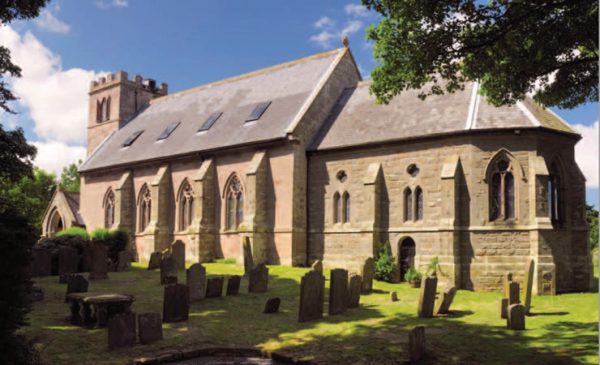
03. Martin’s Patershof Hotel
Previously known as the Frior Minor Church, this property in Belgium is just a few hundred years old. The building was reconstructed after the French Revolution, in neo-Gothic style. It was again renovated after World War 2 and continued being a worshipping place for the Christians till the end of 1990’s when it was sold. By 1999, it had taken the role of a residential area with gardens.
In 2006, the Martin’s Hotels bought the place and transformed it into a 4-star hotel with a luxurious interior. The hotel is one of its kinds with arched ceilings and small towers. The guestrooms show the high level of comfort and luxury that the hotel has to offer. It has a penthouse suite in the top dome and some rooms have private jacuzzis. The environment is believed to be friendly and the surroundings extremely pleasant for those looking for ultimate relaxation during vacations.
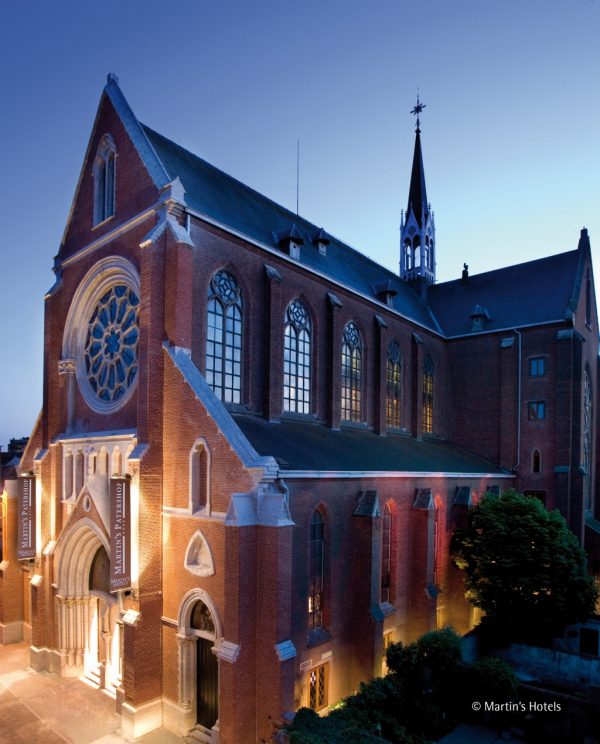
04. Kruisherenhotel
This 15th-century monastery is situated in Maastricht. The church was famous amongst the population of Maastricht as it not only wrote, copied and bound books but also developed communities that aided the sick, poor and needy of the town. But during the French Revolution it started stocking ammunition and other military equipment and ultimately lost its importance as a church. As the 19th century reached its end, the church was restored but as a National Agricultural Research Station. Gradually the building was in a dire need of repair as it was rarely used. It temporarily returned to being a church till late 2000 when it was decided that the historical place should be turned into a luxurious hotel for the betterment. Also, it was the only way to keep the history of the church alive. Therefore the architecture which is an example of Gothic design, that was popular during the medieval times, was left unchanged.
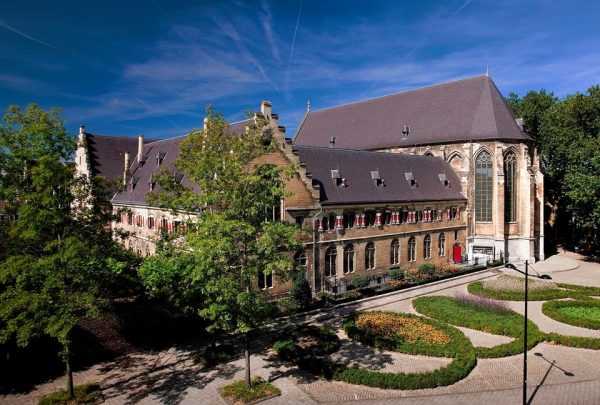
05. Church Brew Works, Pittsburgh
Previously a house of worship, a school and a convent, built in 1992, Church Brew Works is located in the Pittsburgh suburb of the picturesque Lawrenceville. It has the most unusual features which would be difficult to replicate today. The vaulted ceilings, huge central tower, European-style colored glasses and intricate design inspired by the Northern Italian architecture, it is a masterpiece.
It closed down in 1993 and was reopened in 1996. During the three years it was closed, it underwent extensive renovation and was changed into a brew pub that offered a variety in the menu. The interior was designed with great care and a large amount of money was spent on it to make sure that it looks as breathtaking as its surroundings. It soon gained popularity because of its unique outlook and the four excellently brewed, distinctive beers that none of the other pubs is able to serve in the domain.
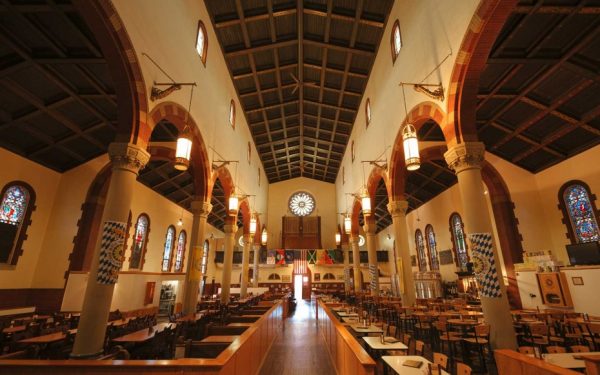
06. O’Neill’s Pub in Muswell Hill
The 20th-century Presbyterian Church was a small one standing at the corner of a road in Muswell Hill, England. It was later converted into an Irish-themed pub which goes by the name of O’Neill’s. Even though it spreads throughout the United Kingdom, the franchise itself is not exactly famous for its deliverance of beers and food neither does it boast of catering only the high class. Still it has garnered favourable reviews from the general public, probably because of the interesting place. This dark-brown building is an exception due to the historical background related to it. Its exterior is much the same as it originally was and only a few changes have been made to the elements inside the church. It can be seen that expensive wood was used for the construction to make it look impressive. To enhance the beauty and atmosphere of the pub, music activities are encouraged on a regular basis.
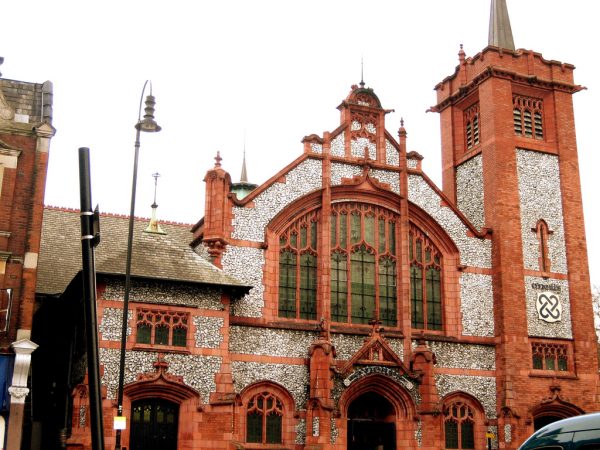
07. SelexyzDominicanen Bookstore
You may have come across a lot of libraries constructed in today’s world that are simply breathtaking. SelexyzDominicanen is one of them, but its roots were planted 800 years ago as a church. This Catholic Church is in Netherland’s city of Maastricht is one of the grandest the world has ever seen. It went through a lot of phases, from a church to a warehouse and later into a bicycle shed. Finally, it was designed into a bookstore by the same architect who worked on the Kruisherenhotel. It is, without a doubt, a perfect place for those who have a thing for both, books and architecture. The vaulted ceilings speak of the significance of the place, keeping its history alive. Three-stories of bookshelves, stocking 50,000 copies with stairs and elevators have been added. The bookstore attracts 700,000 customers per year. Different events take place in the spacious bookstore such as workshops, book presentations, debates, concerts and interviews.
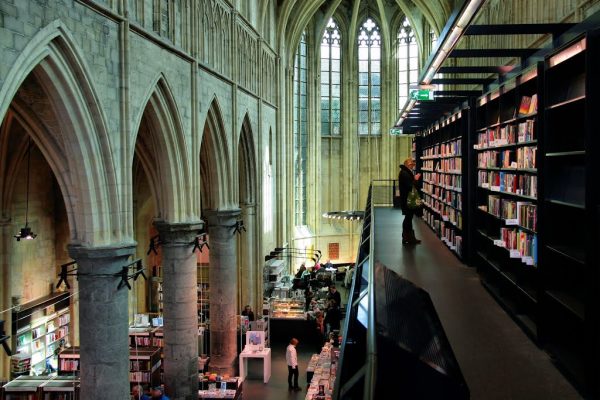
08. II Gattopardo
Its name is taken from a famous Italian novel, ‘The Leopard’. It was once an old chapel in Milan, but it was transformed into a club in 2001. Although it does not attract a large number of people, it is a famous entertaining spot amongst the elite youngsters of Milan because of its environment that specifically serves those who want to experience a wild party. The drinks are expensive and nothing can beat the party that goes all night into the day. However, instead of disco lights, there is a giant chandelier that was a part of the original interior of the church. It is equipped to move up and down according to the rhythm of the music. The architecture is fascinating giving this club altogether a unique look. Although it looks mature, the crowd is not. This is definitely not the place for those looking for a quiet drink in the evening.
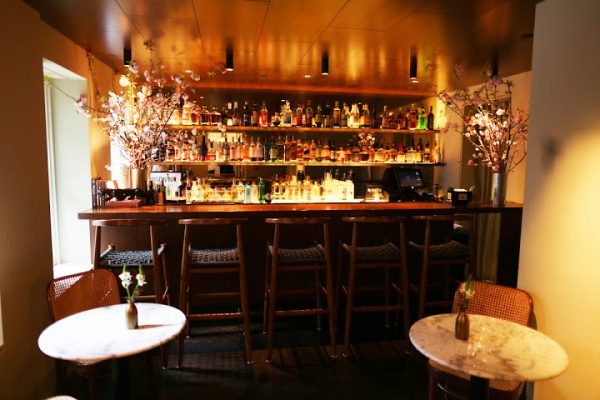
09. Church Bar and Restaurant, Dublin
Constructed at the beginning of the 18th century, the place was formerly a church that went by the name of St. Mary’s situated in Ireland. It was closed down in 1964 and was not put to use for several years until 1997 when it legally became the property of John Keating. He devoted seven years to repair and renovate the place. However, some of the features like the organ and stained glass windows were simply polished. It was then reopened in 2005 under the name of John M. Keating’s Bar. Soon enough, it became the pride of Dublin. In 2007, the place was sold to new owners. They are credited for adding a cafe, nightclub and a barbeque area on the terrace. It now functions under the name of ‘The Church Bar and Restaurant’. Approximately 600,000 people dine in here attracted by the art, history and luxury that the place is famous for. The place was acknowledged at the Dublin City Neighborhood Awards 2006, receiving an award under the category of the Best Old Building.
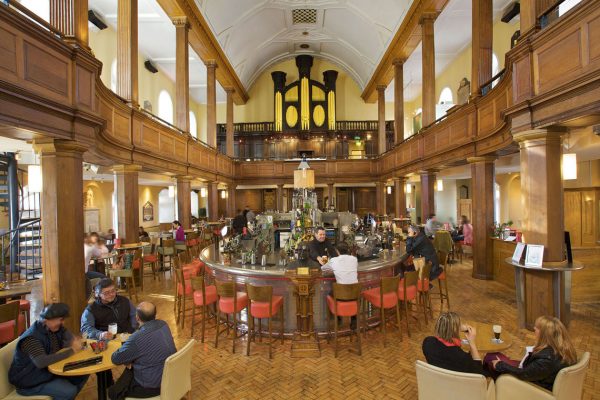
10. Limelight Marketplace
Once an Episcopal church established in 1844, it covers an area of 25000 square feet. It is situated on the Avenue of Americas at West 20th street. It was designed by architect Richard Upjohn. The church underwent a lot of transformations. It was purchased by a drug rehabilitation house but due to financial issues it was sold to Gatien in 1982. This Gothic-style, brownstone building was finally turned into a disco and rock club under the famous club franchise known as ‘The Limelight’. Unfortunately in 1996 it was closed down when the issue of drug dealing at the place was brought into the light by the media. It has reopened from time to time since then. In 2003, it was renamed to ‘Avalon’ but was reopened properly in 2007. The place functioned as a marketplace till 2014 when the idea of converting it into an outlet of a famous Gym chain was put forward.
